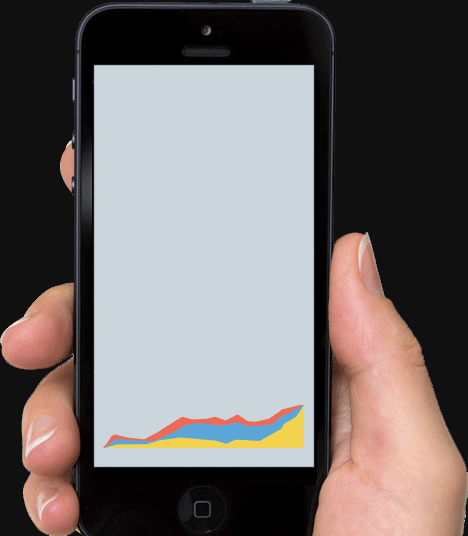Data Science and Industrial Integration
Data science studies the extraction and derivation of meaningful insights from data. The approach to gathering the insight is multidisciplinary.
It takes practices and principles from a variety of fields. Some of these fields are computer engineering, statistics, artificial intelligence, and mathematics.
The applications of data science are unlimited as it answers the four important questions of problem-solving. These are what is the situation, why is it, what is the future course, and what would the result yield.

This basic information gathering and problem-solving make the adoption of data science in different industries feasible.
Data science finds its application in industries such as retail, medicine, banking, finance, and telecommunications among others. Read ahead if you are planning to make a career in data science and are curious about the impact on various industries.
Impact of Data Science on various industries
A career in data science requires professionals to make use of raw data for the identification of patterns. These patterns are then used to derive actionable insights from the data.
With data science, it is possible to predict future outcomes with a higher level of accuracy. Here is how various industries are benefiting from the applications of data science.
1. Healthcare
Applications of data science in the healthcare industry include the use of data in taking important decisions and drawing conclusions. These include the implementation of medical knowledge gathered in the diagnosis of diseases.
Data science is also used to improve the safety and quality of healthcare by helping design prevention plans. It has also helped chart important health parameters such as sugar level, stress level, brain activity, etc using trackers. This can help deliver personalised care and precise prescriptions. A deep learning technique is used in reading imaging data. This is also to reduce diagnostic failures.
2. Retail
In the retail industry applications of data science have led to the implementation of features such as recommendation engines. The impact helps companies design products according to the needs of the consumer. Market-based analysis allows the company to determine the likes, dislikes, and price points of consumers. This allows companies to target the right audience more efficiently.
The science has also helped the industry to analyze customer sentiments more accurately. Social media and other points of contact between consumers and companies help companies collect data. This is further used to enhance the feedback mechanism. The feedback is then used to design better products. Firms using data science can optimise prices efficiently. All these lead to an increase in sales and revenue flow in the industry.
3. Banking, Finance Services, and Insurance Industry (BFSI)
BFSI has benefitted largely from the application of data science in the industry. The industry has been able to minimize its losses with the help of fraud detection using science. It has impacted more efficient management of customer data, risk modelling, and customer support.
Data scientists can generate customer life value prediction that is used to recommend products and services to consumers as per their needs. BFSI companies are also able to minimize the impact of any risk to their businesses with the help of predictive and real-time analysis. These techniques have led firms to increase sales and operational gains.
4. Telecommunication Industry
If you are looking for a career in data science in the telecommunication industry you will be able to impact efficient data transmission and visualisation needs. Data science is applied for increasing fraud detection by firms. Using science, consumers benefit from increased network security.
The benefits for the company include price optimisation, real-time analysis, and prevention of customer churn. Companies can also benefit from features such as location-based promotion, predictive analysis, and targeted marketing.
5. The course you need for a career in data science
The example of the impact of data science on four industries is a mirror of the significance of data science in today’s world. If you are looking for a career in data science Imarticus Learning’s Postgraduate Program In Data Science And Analytics is the one.
The course is designed for early career professionals. This six-month program is designed based on a job-specific curriculum. The learning is accentuated by live learning modules, real-world projects, and KPMG hackathons. The certification is designed to launch your career in data science in an industry of your choice.
Summing it up
Applications of data science are wide. There are several industries apart from healthcare, retail, BFSI, and telecom that are using data science. Data science can help companies grow and the skills of a data scientist are always in demand. You can benefit from a quick start in your career by being a part of Learning’s Postgraduate Program In Data Science And Analytics.
Imaritcus Learning offers you benefits such as Job-assurance, specialized training, and placement drive. It has helped more than 56000 individuals attain placements. Be sure to visit us for other similar courses.





 Independent Learning
Independent Learning 

 The best solutions now enable the entire analytical process, from data access, preparation, and analysis through analytics operationalization and evaluating results. Hence, there is a rise in
The best solutions now enable the entire analytical process, from data access, preparation, and analysis through analytics operationalization and evaluating results. Hence, there is a rise in 
 Analytically experienced organizations tend to use more data from all possible sources when compared to lesser experienced organizations.
Analytically experienced organizations tend to use more data from all possible sources when compared to lesser experienced organizations. Mapping customer data, understanding the buyer’s persona (a fictional identity of a buyer based on customer data), and going the extra mile to meet the customer’s demands can really help businesses, and data analytics is the way to go.
Mapping customer data, understanding the buyer’s persona (a fictional identity of a buyer based on customer data), and going the extra mile to meet the customer’s demands can really help businesses, and data analytics is the way to go.